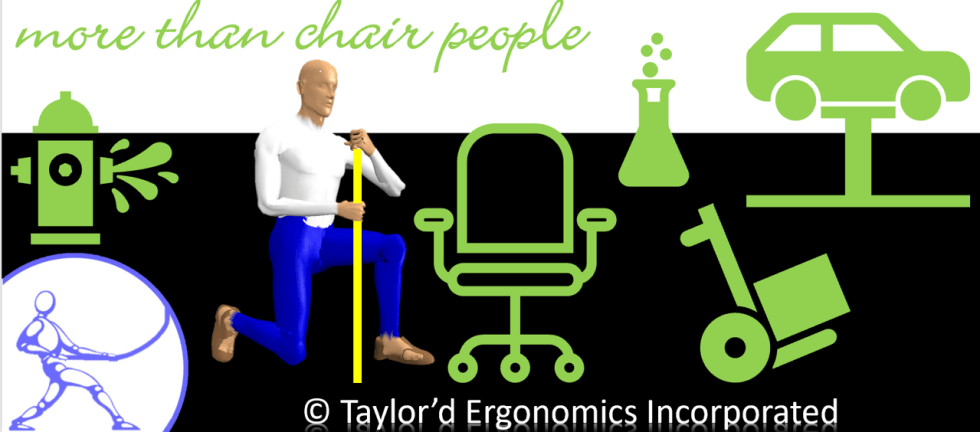Every occupation has a stereotypical application; ergonomists have been associated with chairs. At a party, if we tell someone what we do, the next question will almost always be about chairs “and stuff”. Although we do office assessments, we also do much more technical work.
Ergonomics, the study of work, is a science and an art. The science part requires us to take measurements, evaluate demands against guidelines or standards, and evaluate alternative recommendations. The art part requires some creativity to foster collaboration amongst stakeholders and to come up with recommendations that work.
An ergonomics analysis should evaluate the risk of injury and should prioritize hazards, so you know where to focus. The analysis tools should be used to evaluate the effectiveness of potential solutions, so you don’t waste money on a solution that doesn’t reduce risk. Using tools like the “Maximum Acceptable Exertion” (Potvin) and “Recommended Cumulative Recovery Analysis” (Gibson and Potvin), we can predict the effect of raising a machine by 5 cm, reducing an effort by 2 kg, or shortening the carrying distance by 1 m.
More and more, you should expect your ergonomist to work with your production and quality folks, to ensure that “human performance” issues that are hampering productivity and quality are addressed through an ergonomics intervention. A job with high turnover or absenteeism might also be improved through an ergonomics assessment.
When we do an office assessment, we follow the same process as a more complex assessment. We:
- survey the employee
- take photos and measurements
- observe the employee at work to identify hazards that require change
- adjust the equipment, where possible
- coach the employee to use better work practices, where practical
- write a report to document findings, suggestions to the employee, and recommended purchases or repairs.
Our report includes a follow up, so we can ensure that all the issues were addressed (or take additional steps if there are outstanding issues.) We report our measurements, so the employee could set up a brand-new workstation using an old report (unless their body-size changes). We recommend specific products, adjusted to specific dimensions. The entire process of an office assessment can be completed in a half day. The process is like a hit of “ergo-adrenaline” for an ergonomist – we often make adjustments that provide immediate relief for the employee.
In a more complex work environment like manufacturing or maintenance, we follow the same procedure, but the observations take longer because the jobs are more physically complex or variable, the analysis is more complex, and there are more stakeholders involved in implementation. The guidelines and standards for “non-office” work are scattered across many documents (unlike the CSA Office Ergo Standard), so every ergonomist must find a process or tool that works for the employer or client. We usually choose complex biomechanical and psychophysical tools rather than checklists, because we think our clients want to be able to understand the effects of various small changes on injury risk. But that means that we need to measure and understand the direction of the force that is applied, the exact location of the hands, and the frequency and duration of each effort. And we need to understand the job, and how the equipment works.
The next time you meet an ergonomist at a social gathering, try out some of these questions:
What is the most challenging industry for you to work in?
What implementation are you most proud of?
Which biomechanics program do you use most?
Every occupation has its stereotypes. If I meet you at a party, and you tell me what you do, what should I ask you?


